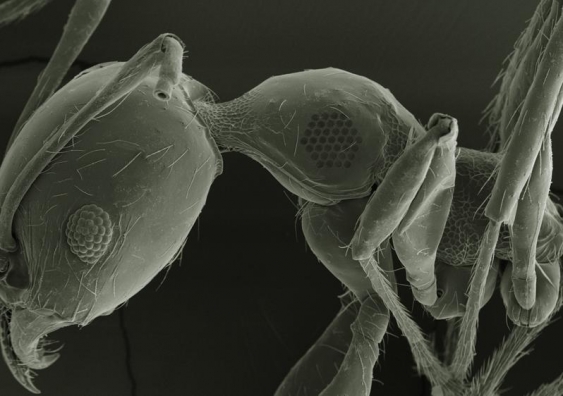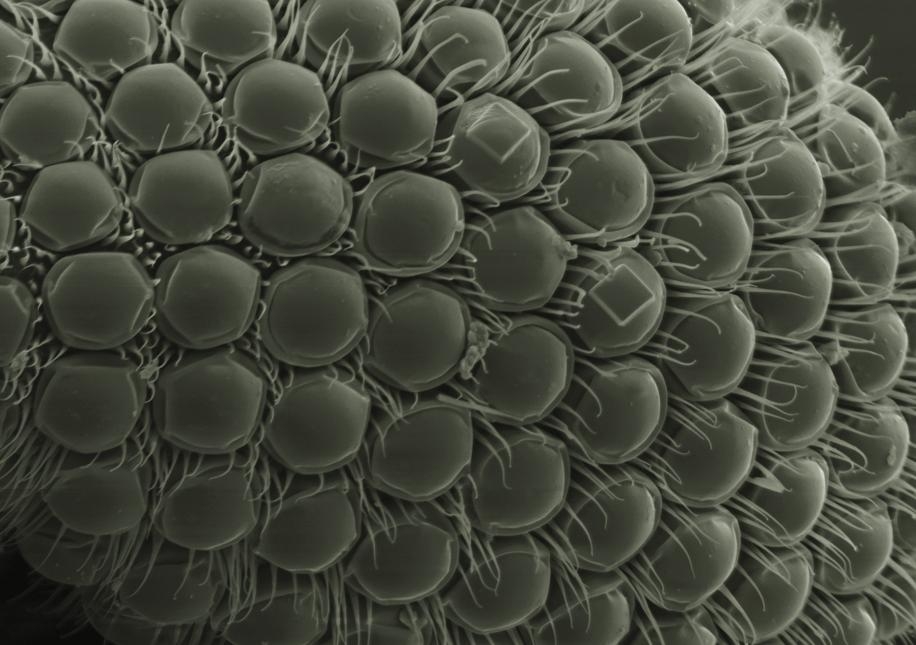Science and art combine to transform a microscopic world
UNSW scientist Paul Munroe has used electron microscopes to help artist Stephanie Valentin create striking images of insects for her new exhibition, Closer.
UNSW scientist Paul Munroe has used electron microscopes to help artist Stephanie Valentin create striking images of insects for her new exhibition, Closer.

The electron microscope image appears to be of a normal ant until you suddenly spot the hexagonal pattern of holes drilled on the dead insect’s body.
In another image taken by artist Stephanie Valentin, a multifaceted insect eye has some strange features – miniscule blocks of platinum.
These high-tech sculptural additions that transform the natural subjects were made using ion-beam technology in UNSW’s Electron Microscope Facility and are the result of a collaboration between the artist and UNSW scientist Professor Paul Munroe.
Ms Valentin’s exhibition Closer, which explores the human relationship to the natural world using electron microscopy, opened this week at the Stills Gallery in Paddington.
“Stephanie selected the insects and designed the patterns. My job was to devise the beam conditions that worked best for the different bugs and different patterns or deposits,” says Professor Munroe, Head of the UNSW School of Materials Science and Engineering.
“It was a great challenge to create what Stephanie envisaged. Some insects had exoskeletons that were fiercely resistant to milling; some milled with minimal beam exposure. We had to devise a different plan of attack for each.”
The holes in the ant were drilled using the gallium ion beam of a Zeiss Auriga Cross Beam Microscope, which is usually used at UNSW to study the structure of solar cells or pieces of semiconductors, steel or other advanced alloys.
The same instrument, which is housed in the UNSW Electron Microscope Unit, was used to deposit the tiny blocks of platinum on the insect eye from a flow of platinum-organic gas.
Ms Valentin used a different instrument in the unit – a Fei Quanta 200 scanning electron microscope – to take the images, because this allowed her to blow them up to make large-scale prints.
Professor Munroe enjoys pushing the limits of the microscopes to create the artworks.
“It is very satisfying and liberating to create beautiful and striking images and work as an artist, in contrast to prosecuting an often tightly defined scientific agenda to prove a hypothesis,” he says.
Media contacts:
Professor Paul Munroe: 9385 4432, p.munroe@unsw.edu.au
UNSW Science media officer: Deborah Smith: 9385 7307, 0478 492 060, deborah.smith@unsw.edu.au
